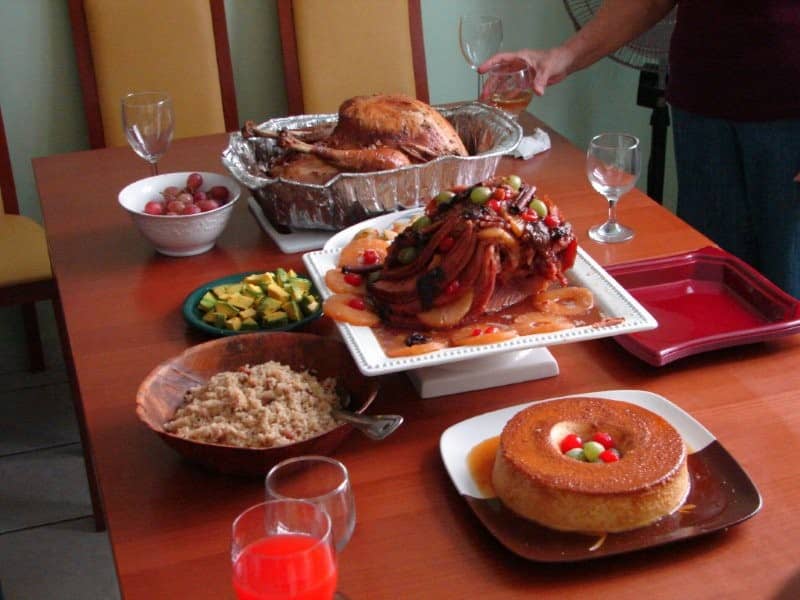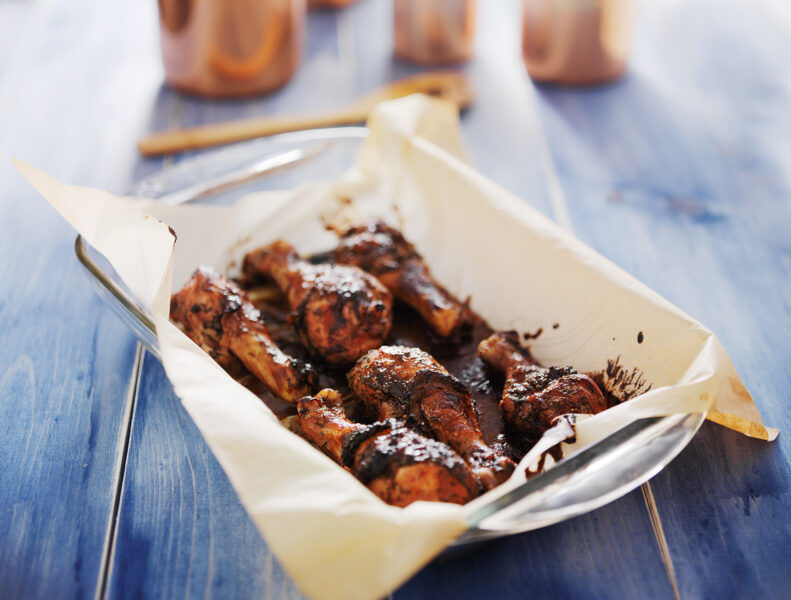Thanksgiving can be a stressful holiday, especially if you’re used to being the host. Endless amounts of food needs to be prepared, along with decorating and inviting family and friends. Have you considered trading your preparation-intensive tradition one year for a warm and sunny Thanksgiving vacation in the Caribbean?
You’ll be glad to know that Thanksgiving is also celebrated in Puerto Rico and other U.S. Territories. The gratitude for life, protection of crops and giving thanks is an American legacy that influences many nations in the world, so the entire Caribbean gets its share.
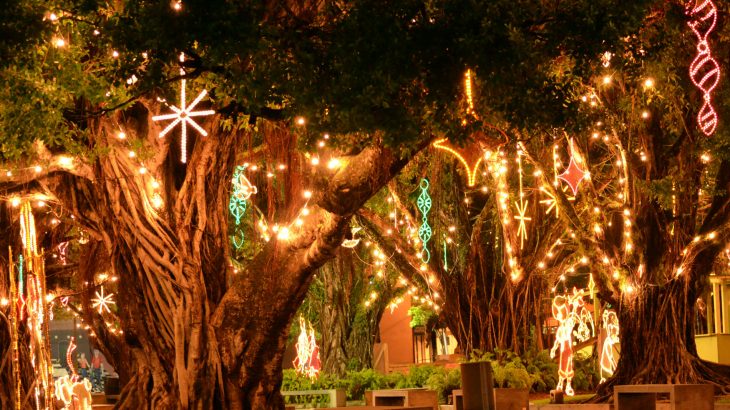
How Puerto Rico Prepares for Thanksgiving
Thanksgiving is relatively new in Puerto Rico—the islanders adopted it when they became a U.S. Territory in the late 1800s. Locals really embrace it, however. Just like on the U.S. mainland, shops close, families come together, ridiculous amounts of food get prepared and eaten and families and friends wake up the next day to fight for Black Friday deals.
During the Thanksgiving holiday, called Día de Acción de Gracias in PR, residents stroll along the beaches soaking up sun and go shopping. The weather is perfect here in November—temperatures range from the mid-70s to mid-80s. And believe it or not, Thanksgiving in Puerto Rico is also the unofficial kick-off for Christmas Season! You’ll see festive lights go up as early as late November on the island. The capital of San Juan literally turns into a Christmas town overnight!
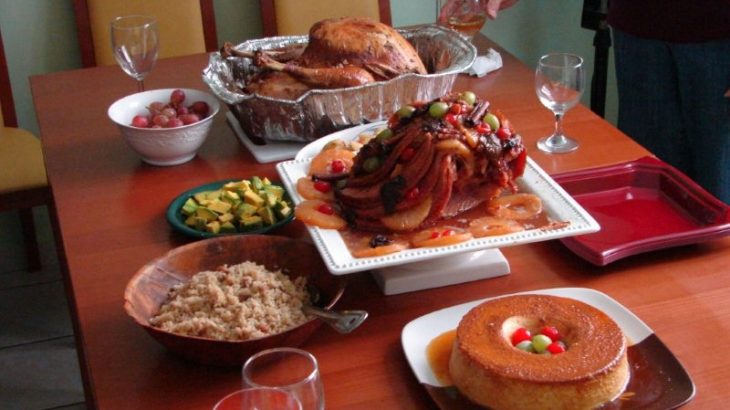
The Puerto Rican Thanksgiving Meal
The Puerto Rican Thanksgiving meal combines the American-style turkey with Latin staples like Arroz con Habichuelas (rice and beans), Arroz con Gandules (rice and pigeon peas) and Perníl (roast pork). Pavochón is a popular and delicious Thanksgiving meal in Puerto Rico and consists of a turkey stuffed with mofongo, Puerto Rico’s national dish. And, since Thanksgiving combines with Christmas season on PR, islanders often make Pavochón all throughout the holiday season.
Start With the Appetizer
Puerto Ricans start with an island appetizer, like the traditional Latin plantains, which is a type of large banana. Usually, families prepare guineos en escabeche (pickled bananas) or tostones (fried plantain) as a starter.
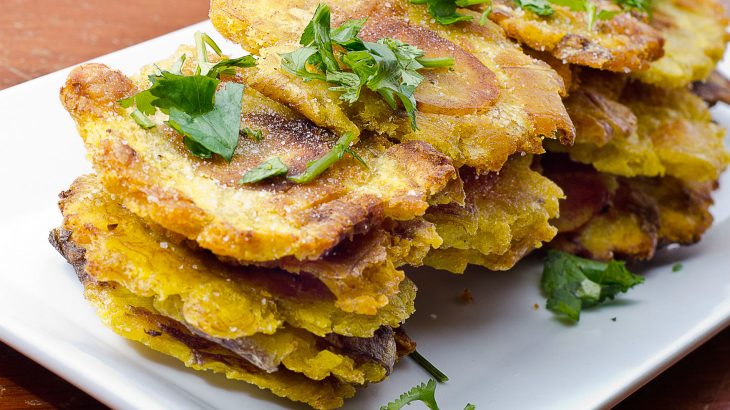
How to Make Your Own Delicious Tostones
You will need:
- 5 tablespoons oil for frying
- 1 green plátano (plantain)
- 3 cups cold water
- salt (for taste)
Instructions:
Peel the plantain and cut into 1-inch chunks. Heat oil in a skillet. Place the plantains in the skillet and fry both sides (3 ½ minutes per side). Take plantains off the skillet and flatten them by pressing a plate over them. Dip the plantains in water; return them to the skillet and fry in hot oil for one minute on each side. Add salt to taste and serve right away.
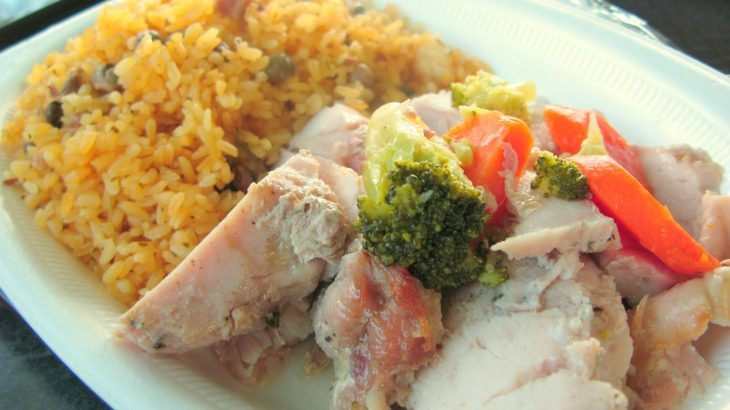
How to Make Pavochón
Puerto Ricans love to spice up their turkey and like in a traditional American kitchen, the turkey usually gets prepared days in advance. The word Pavochón is a portmanteau of a turkey (pavo) that is seasoned like a traditional spit-roasted pig (lechón). So, season your bird with Adobo, and lots of it! Add a generous amount of black pepper, garlic salt, oregano and paprika, making sure to poke holes in the bird to allow the seasoning to sink in.
On Thanksgiving Day, Puerto Ricans wake up early to cook the turkey and to prepare mofongo, which serves as stuffing for the bird.
How to Make Mofongo
You will need:
- 6 large green plátanos (plantains)
- 1/3 cups of chicken broth
- 4 tsp. chopped garlic
- 1 lb. bacon (chopped and cooked; pour away fat)
- 3 sweet chili peppers (chopped)
- ¼ cup olive oil.
Instructions:
Mash the plantains and olive oil mixture in a pilon (pan). Mix all other ingredients, including the chicken broth. The mofongo needs to be moist before being stuffed into the bird; if it’s too dry, add more chicken broth.
Heat the oven to 375 degrees. Place chunks of butter on top and around your stuffed turkey. Some Puerto Ricans also place a whole stick of butter inside the bird so it’s juicier. Always be sure to read the instructions that come with your turkey regarding cooking time.
Many Puerto Rican families also start to decorate their homes for Christmas at this time.
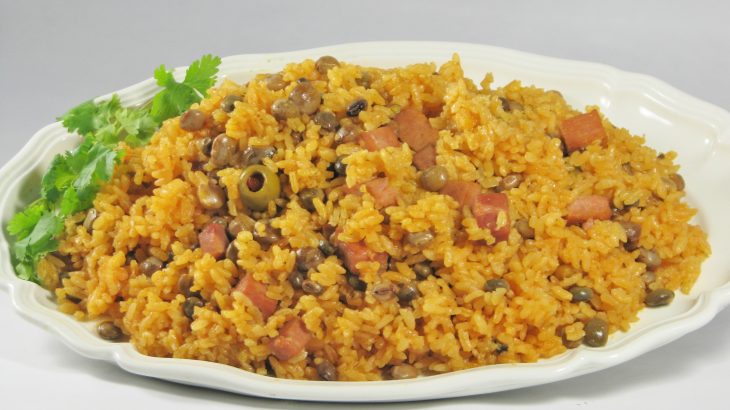
Now to the side, Arroz con Gandules (rice and pigeon peas)
You will need:
- 2 packs of Sazón by Goya (Sazón is a type of seasoning salt)
- 3 cans of gandules (pigeon peas)
- 6 cups of water
- 4 cups of rice
- 2 cups chopped bacon (cooked)
- 2 cups of sofrito (oniony sauce that is the basis for many Puerto Rican dishes)
- 2 tablespoons of olive oil
- Optional: 1 tomato (chopped), green olives.
Instructions:
Heat the olive oil in a large pot; meanwhile, drain and rinse the peas. Then, sauté the sofrito and chopped bacon for about a minute; add rice, water, peas and seasoning. Let it boil for three minutes, then cover and reduce the heat to medium-low. Let it cook for 35-40 minutes. Makes four servings.
Serve with the turkey to the hungry family. Buen provecho!
Dessert
Instead of traditional American pumpkin pie, Puerto Ricans love a good custard for dessert. Tembleque—a cinnamon-coated coconut custard—is a favorite, as well as dulce de leche, also custard-like and made with caramelized milk. It’s best to prepare these while the turkey is cooking, as either dessert needs to chill in the fridge.
Easy Tembleque Recipe
Tembleque, which means ‘wiggly’, is a creamy coconut pudding.
You will need:
- 2 (14 oz.) cans of coconut milk
- ¾ cups sugar
- ½ cup cornstarch
- 1 pinch ground cinnamon
- ¼ teaspoon salt.
Instructions:
Combine milk, sugar and salt in a saucepan. Pour the coconut milk into a bowl, add the cornstarch and stir. Pour mixture into the saucepan. Bring to a boil and stir constantly. Cook until smooth and thick (takes about five minutes). Pour mixture into small square molds (or a large mold, after which you cut the pudding into squares) and cover each with a plastic wrap. Refrigerate until cold and firm (about three hours). Run a thin knife along the pudding to remove and invert the pudding onto a plate. Garnish with cinnamon. The pudding keeps for up to two days in the fridge. Enjoy!
Want more Puerto Rican Thanksgiving recipes? Visit this excellent blog.
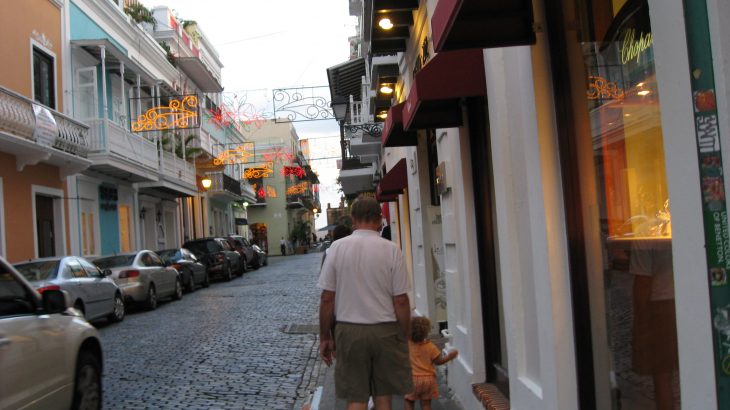
What to Do After Dinner
Puerto Ricans like to relax and wind down after a heavy meal and you’ll find many locals strolling along the beach. Families usually stay together and attend Black Friday sales the next morning. If you’re in PR in late November to early December, you’ll see lights and decorations pop up in local shops and homes, and plenty of holiday events happening throughout the month.
Where to Eat in Puerto Rico on Thanksgiving
If you’re staying in Puerto Rico over Thanksgiving and haven’t had time to prepare for the holiday, San Juan has several places open for Thanksgiving Day. The Emigrante GastroBar offers a buffet menu for $26.95 per person (plus tax), which features roasted whole turkey and various salads and soups. Or, AC Hotel San Juan Condado offers lunch and dinner for Thanksgiving, along with a complimentary cocktail and live entertainment.

Thanksgiving on Other Caribbean Islands
Thanksgiving is actually a great time to travel in the Caribbean, as November until mid-December is low season. You’ll find plenty of cheap flights, hotel deals and crowd-free beaches. Many cruise lines and Caribbean resorts (like the exclusive Sandals beach resorts) prepare special Thanksgiving feasts for their American guests. Check out Pirates Week in the Cayman Islands in November or the Paradise Jam basketball tournament in St. Thomas for a Caribbean-infused holiday.
Thanksgiving definitely has its appeal to non-U.S. Caribbean islanders, such as the gathering of family and friends, but you won’t find the festive at-home celebrations like in the U.S. and Puerto Rico. The formal celebration for any thanksgiving in the Caribbean is usually a religious community affair celebrated in a church. Caribbean islanders have, however, created their own version of an American Thanksgiving meal.
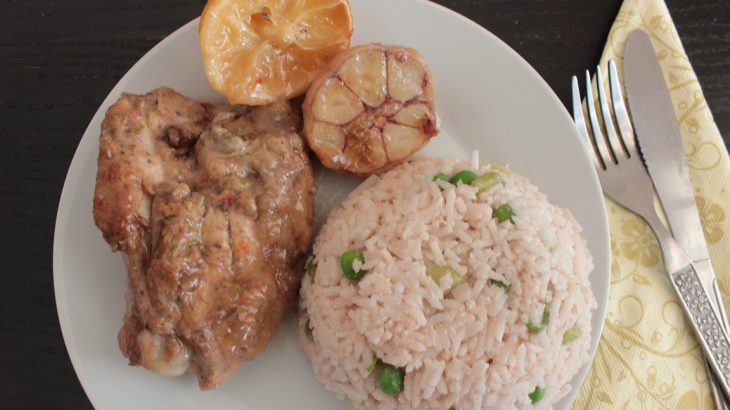
An Islander Thanksgiving Meal
Turkey isn’t a favorite meat in the Caribbean and is often replaced by the island-esque Curry Goat or Jerk Chicken. Likewise, the mashed potatoes you know so well as a side dish are replaced by beans and rice. Here is a comparison of American Thanksgiving cuisine and Non-U.S. Caribbean Thanksgiving cuisine for ideas:
American Version
- Choice of meat: Turkey, sliced ham
- Sides: Mashed potatoes
- Optional sides: Potatoes au gratin, sweet potato soufflé
- Dessert: Pumpkin pie
Non-U.S. Caribbean Version
- Choice of meat: Curry goat, jerk chicken
- Sides: Rice and beans
- Optional sides: Fried plantains, steamed cabbage, tropical salads, pumpkin purée soup
- Dessert: Sweet potato pudding, custard

Singing Thanks With Caribbean Flair
Thanksgiving Service (Harvest Celebration) in the Caribbean involves residents bringing healthy crop samples to their church and laying them around the church altar as a way to give thanks. The service includes singing “We Plough the Fields and Scatter” (also known as “All Good Gifts”).
Conversations include sharing memories of past events, the comparison of American and Caribbean life, American politics and American opportunities. For the islanders, Thanksgiving also means peace, togetherness and thanks, and locals are enthusiastic to support this American legacy.
